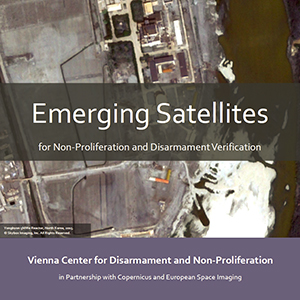
In 2014, the VCDNP won the European Space Imaging (EUSI) and Skybox Imaging High-Res Challenge as part of the 2014 Copernicus Masters Competition, a competition that awards prizes for innovative solutions for business and society based on Earth observation (EO) data.

The goal of the winning project, submitted by Tamara Patton, VCDNP Research Associate and PhD Candidate at Princeton University, was to examine the potential utility of emerging systems of commercial EO satellites to support nuclear non-proliferation, disarmament and treaty verification efforts. The capabilities in focus included emerging constellations of small satellites capturing very high-resolution (VHR) imagery and high definition (HD) video, sub 50 centimeter resolution systems and new regional systems. The project was made possible by the Counter Proliferation Programme of the UK Foreign and Commonwealth Office, and the imagery supplied courtesy of EUSI.
The project's final report is now available for free release. The final report discusses these particular development trends in the commercial EO domain. This is followed by an examination of how such capabilities might apply to observing nuclear fuel cycle or weapon development facilities, using facilities in the Democratic People's Republic of Korea as a case study. Treaty verification requirements are primarily examined in the contexts of the Comprehensive Nuclear-Test-Ban Treaty (CTBT), the Treaty on the Non-Proliferation of Nuclear Weapons (NPT) and the International Atomic Energy Agency (IAEA). New EO capabilities are also examined in the context of the United Nations Security Council nuclear-related sanctions implementation, the Organisation for the Prohibition of Chemical Weapons (OPCW) and nuclear arms control and disarmament efforts.
The report identifies opportunities, obstacles and future considerations for the application of emerging types of commercial EO satellite data in various treaty verification domains. In particular: